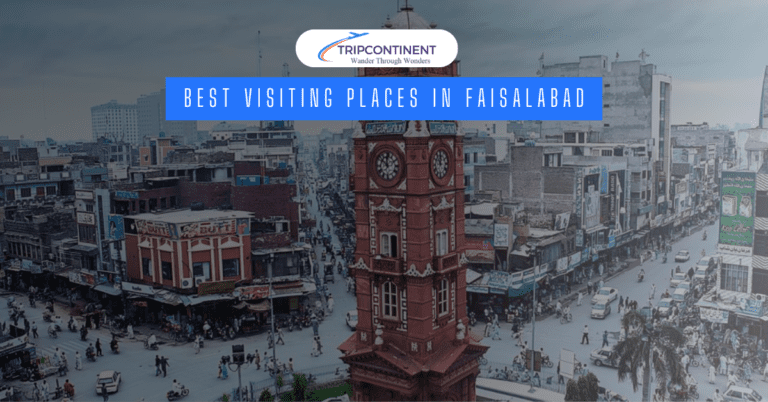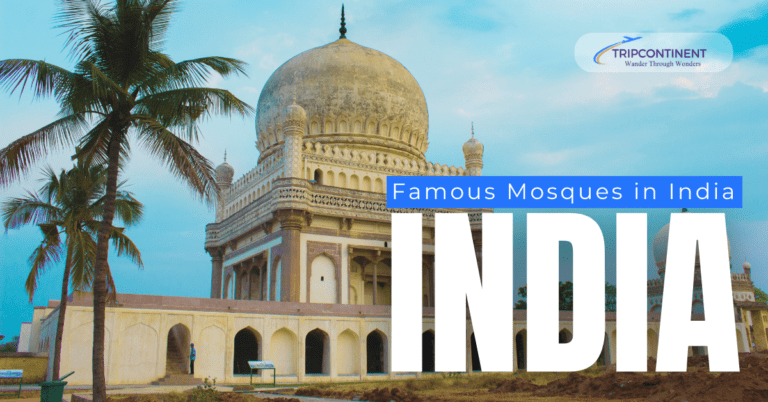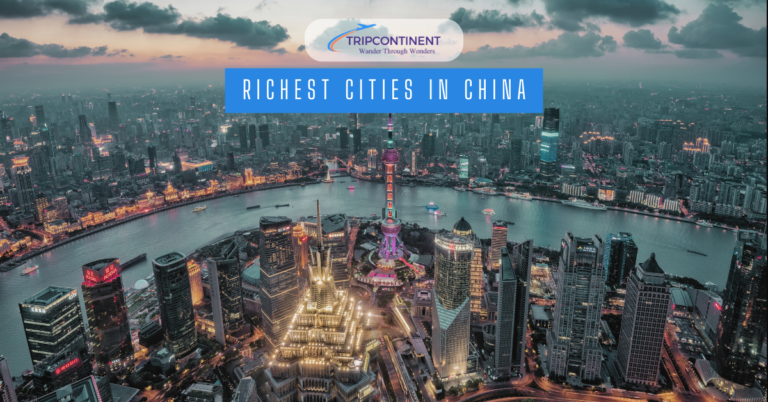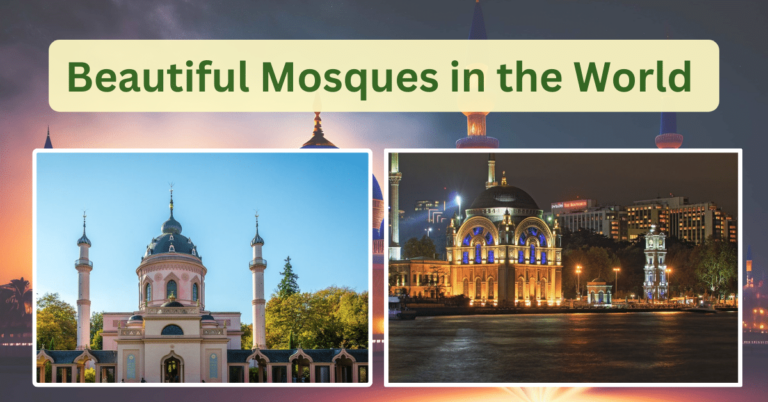Top 10 Most Attractive Places to Visit in Italy
Italy, a country renowned for its rich history, stunning landscapes, and vibrant culture, is a top destination for travelers worldwide. From ancient ruins and artistic masterpieces to breathtaking coastlines and charming villages, Italy offers various attractions that cater to all interests. Whether you’re a history buff, an art lover, a foodie, or an adventure seeker, Italy has something to enchant every visitor.
Let’s explore the Top Places to Visit in Italy.
List of the Top Places to Visit in Italy
The following is the list of the top places to visit in Italy:
- Rome
- Florence
- Venice
- Cinque Terre
- Amalfi Coast
- Sicily
- Tuscany
- Lake Como
- Milan
- Capri
1. Rome
Rome, the capital of Italy, is a city steeped in history, culture, and architectural splendor. Founded in 753 BC, Rome has evolved from a small settlement into a powerful empire that shaped much of Western civilization. Today, it is a testament to its glorious past, attracting millions of visitors annually.
One of the most iconic landmarks in Rome is the Colosseum, an ancient amphitheater that could hold up to 80,000 spectators. It was used for gladiatorial contests and public spectacles. Nearby, the Roman Forum offers a glimpse into the political and social heart of ancient Rome, with ruins of temples, basilicas, and public spaces.
The Pantheon, originally built as a temple to all Roman gods, is another must-see. Its well-preserved structure, with a massive dome and oculus, continues to inspire awe. Additionally, the Vatican City, an independent city-state within Rome, is the spiritual and administrative center of the Roman Catholic Church. St. Peter’s Basilica and the Sistine Chapel, with Michelangelo’s breathtaking frescoes, are highlighted here.
Rome’s historic center, a UNESCO World Heritage Site, includes charming squares like Piazza Navona and the Trevi Fountain, where visitors toss coins to ensure their return to the city. The Spanish Steps, leading up to the Trinità dei Monti church, provide a perfect spot for relaxation and people-watching.
Modern Rome is a vibrant city, seamlessly blending ancient history with contemporary life. It offers a plethora of museums, art galleries, and theaters. Exploring Rome means walking through layers of history, each corner revealing a story of its glorious past.
You Might Also Like: Top 10 Places to Visit in Spain
2. Florence
Florence, the capital of Italy’s Tuscany region, is renowned for its rich history, stunning art, and architectural beauty. Known as the birthplace of the Renaissance, Florence played a crucial role in the development of Western art and culture during the 14th to 16th centuries. The city’s influence during this period is evident in its numerous museums, churches, and palaces.
One of Florence’s most iconic landmarks is the Florence Cathedral, or the Duomo, with its striking red-tiled dome designed by Filippo Brunelleschi. Nearby, the Baptistery of St. John is famous for its bronze doors, particularly the “Gates of Paradise” by Lorenzo Ghiberti. Another must-see is the Uffizi Gallery, which houses an unparalleled collection of Renaissance art, including works by Botticelli, Michelangelo, and Leonardo da Vinci.
The Ponte Vecchio, a medieval stone bridge over the Arno River, is lined with jewelry shops and offers picturesque views of the river and city. The bridge is one of Florence’s most photographed spots and a great place to enjoy a stroll.
Florence’s historic center, a UNESCO World Heritage Site, is filled with charming streets and squares, such as Piazza della Signoria, where the Palazzo Vecchio stands as a testament to the city’s political history. Nearby, the Galleria dell’Accademia showcases Michelangelo’s David, one of the most famous sculptures in the world.
Florence is a city where history and art intertwine seamlessly with modern life. Its vibrant cultural scene includes festivals, music, and theater, providing visitors with a dynamic experience.
3. Venice
Venice, the capital of Italy’s Veneto region, is a city unlike any other, renowned for its intricate canal system, stunning architecture, and rich cultural heritage. Built on more than 100 small islands in a lagoon in the Adriatic Sea, Venice has no roads, just canals, including the famous Grand Canal lined with Renaissance and Gothic palaces.
Founded over 1,500 years ago, Venice grew into a major maritime power during the Middle Ages and Renaissance. Its strategic position made it a center for commerce and trade, influencing its wealth and the development of its unique culture and architecture.
One of Venice’s most iconic landmarks is St. Mark’s Basilica, a stunning example of Italo-Byzantine architecture with its ornate façade and opulent interior adorned with mosaics. Adjacent to the basilica is St. Mark’s Square (Piazza San Marco), often referred to as “the drawing room of Europe.” This bustling square is surrounded by historic buildings, including the Campanile (bell tower) and the Doge’s Palace, a masterpiece of Gothic architecture that served as the residence of the Doge of Venice.
The Rialto Bridge, the oldest of the four bridges spanning the Grand Canal, is another must-see. This elegant stone bridge offers spectacular views of the canal and is lined with shops selling jewelry, linens, and Murano glass. Speaking of glass, a visit to the island of Murano, renowned for its glass-making tradition, provides an opportunity to see artisans at work and purchase exquisite glass pieces.
Venice is famous for its cultural events, including the Venice Biennale, an international art exhibition, and the Venice Film Festival, one of the most prestigious in the world. The city’s Carnival, with its elaborate masks and costumes, is a vibrant celebration of Venetian culture and history.
You Might Also Like: Most Beautiful Cities in the World
4. Cinque Terre
Cinque Terre, meaning “Five Lands,” is a stunning coastal region in Italy’s Liguria province, encompassing five picturesque villages: Monterosso al Mare, Vernazza, Corniglia, Manarola, and Riomaggiore. These villages, nestled between rugged cliffs and the Ligurian Sea, are renowned for their colorful houses, dramatic landscapes, and scenic hiking trails.
The history of Cinque Terre dates back to the early medieval period. The villages were initially founded as fishing communities, with residents adapting to the challenging terrain by building terraced fields for agriculture, primarily cultivating grapes and olives. The region remained relatively isolated until the late 19th century when the railway line connecting it to the rest of Italy was constructed, opening it up to tourism.
Monterosso al Mare is the largest and most resort-like of the five villages, boasting a long sandy beach, historic churches, and the impressive Aurora Tower. Vernazza, often considered the most beautiful, features a charming harbor, narrow streets, and the medieval Doria Castle. Corniglia, perched on a cliff, is the only village without direct sea access, offering stunning views and a more tranquil atmosphere.
Manarola, with its iconic multicolored buildings cascading down the hillside, is famous for its wine production and scenic vistas. Riomaggiore, the southernmost village, is known for its dramatic coastal scenery and the Via dell’Amore (Lover’s Lane), a romantic path that connects it to Manarola.
Cinque Terre is a UNESCO World Heritage Site, celebrated for its cultural significance and breathtaking landscapes. The area is also part of the Cinque Terre National Park, established to protect its unique environment and promote sustainable tourism.
Traveling to Cinque Terre offers a unique blend of natural beauty, rich history, and vibrant local culture.
5. Amalfi Coast
The Amalfi Coast, a UNESCO World Heritage Site, is a stunning stretch of coastline in southern Italy’s Campania region, known for its dramatic cliffs, picturesque villages, and azure waters. This 50-kilometer stretch along the Sorrentine Peninsula is celebrated for its natural beauty, historical significance, and cultural richness.
The Amalfi Coast includes several charming towns, each with its unique character. Positano, with its pastel-colored houses tumbling down to the sea, is famed for its steep streets, chic boutiques, and vibrant beach scene. Amalfi, the coast’s namesake town, boasts a rich maritime history, a stunning cathedral (Duomo di Amalfi), and the fascinating Amalfi Paper Museum. Ravello, perched high above the coast, is known for its beautiful gardens, such as Villa Cimbrone and Villa Rufolo, and its breathtaking views that have inspired artists and writers for centuries.
The history of the Amalfi Coast dates back to the Roman era, with significant development during the Middle Ages when Amalfi was a powerful maritime republic. The region’s strategic location made it an important center for trade and commerce. The towns were heavily fortified, and many of their defensive structures, such as watchtowers and castles, remain today.
Exploring the Amalfi Coast is a feast for the senses. The winding coastal road, Strada Statale 163, offers some of the most scenic drives in the world, with stunning vistas at every turn. The region’s natural beauty can also be appreciated through various hiking trails, including the famous Path of the Gods (Sentiero degli Dei), which offers panoramic views of the coastline.
The Amalfi Coast is also home to several stunning beaches, such as Spiaggia Grande in Positano and Marina Grande in Amalfi, where visitors can relax and soak up the Mediterranean sun. Boat tours offer another perspective of the coastline, allowing visitors to explore hidden coves and sea caves, such as the Emerald Grotto.
6. Sicily
Sicily, the largest island in the Mediterranean Sea, is a region rich in history, culture, and natural beauty. Located just off the “toe” of Italy’s “boot,” this island has been a crossroads of civilizations for millennia, influenced by Greek, Roman, Arab, Norman, and Spanish cultures, among others.
Sicily’s history is a tapestry of different denominations. Ancient Greek ruins, such as those found in the Valley of the Temples in Agrigento and the ancient theater in Taormina, highlight the island’s importance in antiquity. The Romans, Byzantines, Arabs, Normans, and Spanish all left their mark, creating a unique cultural and architectural heritage. Palermo, the island’s capital, exemplifies this rich history with its Norman Palace, Palatine Chapel, and the striking mix of Arab-Norman architecture.
One of Sicily’s most prominent natural features is Mount Etna, Europe’s highest and most active volcano. Located on the eastern side of the island, Etna offers skiing in the winter and hiking year-round. The fertile volcanic soil around Etna supports extensive vineyards and orchards, contributing to Sicily’s renowned wine production and agriculture.
The island’s coastline is dotted with beautiful beaches and charming towns. Cefalù, with its stunning Norman cathedral and sandy beaches, is a popular destination. The Aeolian Islands, a volcanic archipelago off Sicily’s northeastern coast, offer unique landscapes and opportunities for adventure, including hiking, diving, and exploring thermal springs.
Sicily’s baroque architecture is another highlight, particularly in the Val di Noto region, which includes towns like Noto, Ragusa, and Modica. These towns were rebuilt in a distinctive baroque style following a devastating earthquake in 1693 and are now recognized as UNESCO World Heritage Sites.
The island’s cultural calendar is filled with festivals and events. The annual Carnival in Acireale is one of Italy’s most famous, featuring elaborate floats and parades. Religious festivals, such as the Feast of Santa Rosalia in Palermo, highlight Sicily’s deep-rooted traditions and community spirit.
Also Read: Best Places to Visit in France
7. Tuscany
Tuscany, a region in central Italy, is renowned for its stunning landscapes, rich history, artistic heritage, and culinary delights. Known for its rolling hills, picturesque villages, and world-class vineyards, Tuscany attracts millions of visitors each year seeking to experience its unique blend of culture and natural beauty.
Florence, the capital of Tuscany, is the birthplace of the Renaissance and home to some of the world’s most famous art and architecture. The Florence Cathedral, or the Duomo, with its iconic dome designed by Brunelleschi, is a must-see. The Uffizi Gallery houses masterpieces by Botticelli, Michelangelo, and Leonardo da Vinci, among others. The Ponte Vecchio, a medieval stone bridge lined with shops, and the Piazza della Signoria, a historic square, are also key attractions.
Outside Florence, Tuscany is dotted with charming towns and villages, each with its character and appeal. Siena, known for its medieval cityscape and the annual Palio horse race, boasts the magnificent Siena Cathedral and the fan-shaped Piazza del Campo. Pisa is famous for its Leaning Tower, part of the Piazza dei Miracoli complex, which includes the cathedral, baptistery, and cemetery.
The Val d’Orcia, a UNESCO World Heritage Site, epitomizes the idyllic Tuscan landscape with its rolling hills, cypress trees, and historic towns such as Pienza and Montalcino. Pienza, designed as an ideal Renaissance town by Pope Pius II, is renowned for its harmonious architecture and pecorino cheese. Montalcino is famous for producing Brunello di Montalcino, one of Italy’s finest wines.
The Chianti region, located between Florence and Siena, is synonymous with wine. Visitors can explore the scenic countryside, visit wineries, and taste the renowned Chianti Classico wines. San Gimignano, known as the “Town of Fine Towers,” is famous for its medieval towers that create a distinctive skyline. The town’s historic center, a UNESCO World Heritage Site, is well-preserved and offers a glimpse into medieval life.
Tuscany is also rich in cultural and outdoor activities. The region’s numerous hot springs, such as those in Saturnia and Bagno Vignoni, offer relaxing thermal baths. The Apuan Alps and the Apennines provide opportunities for hiking, biking, and exploring nature.
8. Lake Como
Lake Como, located in the Lombardy region of northern Italy, is one of the most beautiful and prestigious lakes in the country. Renowned for its stunning scenery, charming villages, and luxurious villas, Lake Como has been a popular retreat for aristocrats and celebrities for centuries.
Shaped like an inverted Y, Lake Como covers an area of 146 square kilometers and reaches depths of up to 410 meters, making it one of the deepest lakes in Europe. The lake is surrounded by mountains and lush greenery, providing a picturesque backdrop for the towns and villages that dot its shores.
The town of Como, located at the southern tip of the lake, serves as a gateway to the region. Como is known for its beautiful cathedral (Duomo di Como), historic architecture, and lively waterfront. The town also features the funicular railway to Brunate, offering panoramic views of the lake and surrounding mountains.
Bellagio, often referred to as the “Pearl of Lake Como,” is situated at the intersection of the lake’s three branches. This picturesque village is famous for its cobblestone streets, elegant villas, and stunning gardens, such as those at Villa Melzi and Villa Serbelloni. Bellagio’s strategic location provides easy access to other parts of the lake via ferry.
Varenna, a charming fishing village on the eastern shore, is known for its narrow alleys, colorful houses, and serene atmosphere. Key attractions in Varenna include the Villa Monastero, with its beautiful gardens and museum, and the Castello di Vezio, a medieval castle offering breathtaking views of the lake.
Tremezzo, on the western shore, is home to the magnificent Villa Carlotta, a 17th-century mansion renowned for its art collections and expansive botanical gardens. The villa’s terraces provide stunning views of the lake and the surrounding mountains.
Lake Como is also famous for its luxurious villas, many of which are open to the public. Villa del Balbianello, located on a wooded promontory near Lenno, is one of the most iconic. This 18th-century villa, with its elegant architecture and terraced gardens, has been featured in several films, including “Star Wars: Episode II – Attack of the Clones” and “Casino Royale.”
The region’s mild climate makes it an ideal destination for outdoor activities. Visitors can enjoy boating, sailing, windsurfing, and swimming in the lake’s clear waters.
9. Milan
Milan, the capital of Italy’s Lombardy region, is a global hub of fashion, design, finance, and culture. Known for its sophisticated atmosphere, rich history, and vibrant arts scene, Milan seamlessly blends its historic landmarks with cutting-edge modernity.
One of Milan’s most iconic landmarks is the Milan Cathedral or the Duomo di Milano. This stunning Gothic cathedral, which took nearly six centuries to complete, is one of the largest churches in the world. Its intricate façade, adorned with countless statues and spires, and the panoramic views from its rooftop terraces make it a must-visit. Nearby, the Galleria Vittorio Emanuele II, one of the world’s oldest shopping malls, impresses with its grand architecture and luxury boutiques.
The Santa Maria delle Grazie convent houses one of Milan’s most famous artworks, Leonardo da Vinci’s “The Last Supper.” This iconic fresco, depicting Jesus and his disciples, is a masterpiece of Renaissance art and draws visitors from around the globe.
Milan’s cultural scene is further enriched by its numerous museums and galleries. The Pinacoteca di Brera showcases an outstanding collection of Italian Renaissance art, including works by Caravaggio, Raphael, and Titian. The Sforza Castle, a historic fortress, hosts several museums, including the Museo d’Arte Antica and the Museum of Musical Instruments.
Renowned as a fashion capital, Milan hosts the prestigious Milan Fashion Week twice a year, attracting top designers, models, and industry professionals. The Quadrilatero della Moda, a district encompassing Via Montenapoleone and Via della Spiga, is famous for its high-end fashion boutiques and designer stores.
Milan is also a major center for design and innovation. The city’s annual Salone del Mobile, the world’s leading furniture and design fair, highlights Milan’s influence in the design world. The Triennale di Milano, a design and art museum, showcases contemporary art, architecture, and design exhibitions.
Sports enthusiasts will find much to enjoy in Milan, home to two of Italy’s most successful football clubs, AC Milan and Inter Milan. Matches at the iconic San Siro Stadium offer an electric atmosphere and a glimpse into the city’s passionate sports culture.
Also See: Richest Countries in Europe
10. Capri
Capri, a small island in the Tyrrhenian Sea off the Sorrentine Peninsula in southern Italy, is renowned for its natural beauty, glamorous atmosphere, and historical allure. This picturesque island has been a retreat for emperors, artists, and celebrities for centuries, attracting visitors with its stunning landscapes and cultural treasures.
The island of Capri is divided into two main towns: Capri and Anacapri. Capri town, located on the eastern side of the island, is known for its chic boutiques, upscale restaurants, and bustling Piazzetta, a charming square lined with cafes and shops. The town offers panoramic views of the Gulf of Naples and Mount Vesuvius in the distance.
Anacapri, located on the western side of the island and perched at a higher elevation, provides a more relaxed and authentic atmosphere. Visitors can explore the Villa San Michele, the former home of Swedish physician Axel Munthe, which offers stunning views and beautiful gardens. The chairlift to the summit of Monte Solaro provides breathtaking panoramic views of the island and the surrounding sea.
Capri’s natural landmarks are among its most famous attractions. The Blue Grotto (Grotta Azzurra), a sea cave on the northern coast of the island, is renowned for its brilliant blue waters illuminated by sunlight entering through an underwater cavity. Visitors can access the grotto by small rowboats and experience its magical ambiance.
Capri’s cultural heritage is also noteworthy. The Villa Jovis, built by Emperor Tiberius in the 1st century AD, offers insights into the island’s ancient Roman history and provides panoramic views of the coastline. The Certosa di San Giacomo, a Carthusian monastery in Capri town, houses a museum with religious art and artifacts.
Conclusion
So these were the top places to visit in Italy. Italy offers a wealth of unforgettable experiences for every traveler. Each destination has its unique appeal, making Italy a diverse and captivating country to explore. Your journey through Italy will be filled with memorable moments and discoveries at every turn.
FAQs
Is Italy Cheap for Tourism?
Italy offers a range of travel experiences to fit different budgets, but it’s generally considered a moderately priced destination for tourism.
What Is the Cheapest Month to Travel in Italy?
The best time to visit Italy for those traveling on a budget is the tourist off-season from November 1st to December 14th, and from December 24th to March 31st.
Is Italy or Spain Cheaper?
Both Italy and Spain offer a range of travel experiences and costs, but generally, Spain is considered slightly cheaper than Italy for tourists.
What Currency Is Used in Italy?
The currency used in Italy is the Euro (€). When traveling in Italy, it’s advisable to have some cash on hand for smaller purchases, as some small businesses and rural areas may not accept credit cards.
What Is Italy Famous For?
Italy is famous for its architecture, culture, art, opera, literature, film, and fashion. This is one of the best countries to travel to.

I’m Sophia Jones, an adventurer at heart from New York City, USA. I live for travel and exploration, always eager to discover new places, meet fascinating people, and try out diverse cuisines. Over the past few years, I’ve traveled to numerous countries, immersing myself in different cultures and creating unforgettable memories.






